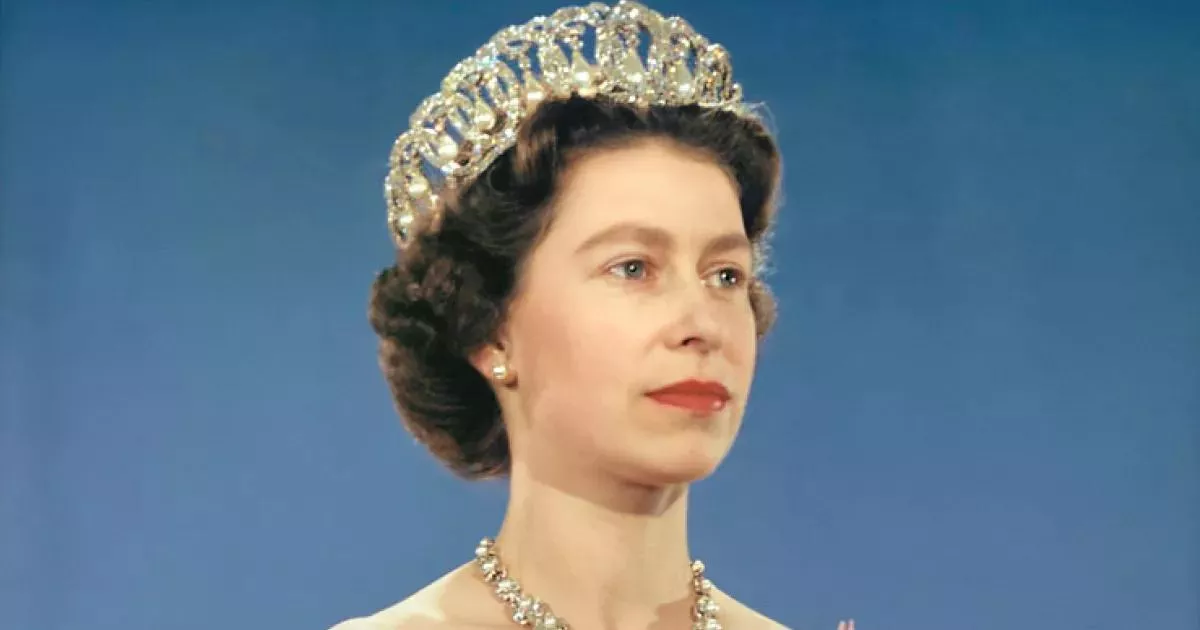An overview of the childhood and early education of Elizabeth II, highlighting the experiences that shaped the journey.
Elizabeth II reigned as Queen of the United Kingdom and other Commonwealth realms from 1952 until her death in 2022. She ruled 32 sovereign states during her lifetime, and 15 at the time of her death. Her reign, lasting 70 years and 214 days, is the longest of any British monarch and the second-longest of any sovereign. She also holds the record as the longest-reigning queen regnant in history.
April 1926: Elizabeth II's Birth
In April 1926, Elizabeth Alexandra Mary, later known as Elizabeth II, was born. She would become Queen of the United Kingdom and other Commonwealth realms.
April 1926: Birth of Elizabeth
In April 1926, Elizabeth was born in London, the first child of the Duke and Duchess of York (later King George VI and Queen Elizabeth The Queen Mother).
1926: First Official Portrait Photograph
In 1926, Marcus Adams took the first official portrait photograph of Elizabeth.
1927: Royal Tour of Australia and New Zealand
In 1927, Elizabeth remained in Britain when her parents toured Australia and New Zealand as she was considered too young for public tours.
1929: Visits to Grandfather
In 1929, Elizabeth's regular visits to her seriously ill grandfather, George V, were credited with raising his spirits and aiding his recovery.
1930: Birth of Princess Margaret
In 1930, Princess Margaret, the only sibling of Elizabeth, was born. The two princesses were educated at home.
1933: First Royal Corgi
Elizabeth's lifelong love of corgis began in 1933 with Dookie, the first of many royal corgis.
1934: First Meeting with Prince Philip
In 1934, Elizabeth first met her future husband, Prince Philip of Greece and Denmark.
1936: Abdication of Edward VIII
In 1936, Edward VIII abdicated, leading to Elizabeth's father becoming King George VI and making Elizabeth the heir presumptive to the throne.
1936: Father Accedes to the Throne
In 1936, Elizabeth's father acceded to the throne upon the abdication of his brother Edward VIII, making the ten-year-old Princess Elizabeth the heir presumptive.
1937: Second Meeting with Prince Philip
In 1937, Elizabeth met Prince Philip of Greece and Denmark for the second time.
July 1939: Meeting Prince Philip at Dartmouth
In July 1939, Elizabeth met Prince Philip at the Royal Naval College in Dartmouth, where she fell in love with him and began exchanging letters.
1939: Royal Tour of Canada and the United States
In 1939, Elizabeth's parents toured Canada and the United States, but Elizabeth remained in Britain as she was considered too young to undertake public tours.
May 1940: Residence at Royal Lodge, Windsor
From February to May 1940, Princesses Elizabeth and Margaret lived at Royal Lodge, Windsor, before moving to Windsor Castle.
April 1944: Elizabeth's Arms
From April 1944 until her accession, Elizabeth's arms consisted of a lozenge bearing the royal coat of arms of the United Kingdom, differentiated with a label of three points argent, the centre point bearing a Tudor rose, and the first and third a cross of Saint George.
1946: Induction into the Gorsedd of Bards
In 1946, Elizabeth was inducted into the Gorsedd of Bards at the National Eisteddfod of Wales.
July 1947: Official Engagement Announcement
On 9 July 1947, the engagement of Elizabeth to Prince Philip was officially announced.
November 1947: Marriage to Philip Mountbatten
In November 1947, Elizabeth married Philip Mountbatten, a former prince of Greece and Denmark. The marriage lasted 73 years.
November 1947: Marriage at Westminster Abbey
On 20 November 1947, Elizabeth married Philip Mountbatten at Westminster Abbey, receiving 2,500 wedding gifts from around the world.
1947: Overseas Tour in Southern Africa
In 1947, Elizabeth went on her first overseas tour, accompanying her parents through southern Africa.
November 1948: Birth of Prince Charles
In November 1948, Elizabeth gave birth to her first child, Prince Charles.
July 1949: Residence at Clarence House
In July 1949, Elizabeth and Philip took up residence at Clarence House in London, after leasing Windlesham Moor.
August 1950: Birth of Princess Anne
In August 1950, Elizabeth gave birth to her second child, Princess Anne.
October 1951: Visit to Canada and Washington, DC
In October 1951, Elizabeth visited Canada and Washington, DC, where her private secretary carried a draft accession declaration in anticipation of King George VI's death. This reflects the King's declining health and the preparation for Elizabeth's potential accession to the throne.
1951: Residence in Malta
Between 1949 and 1951, Elizabeth lived intermittently in Malta with Philip, who was stationed there as a Royal Navy officer. They resided at Villa Guardamangia.
April 1952: Declaration on the Royal House Name
On April 9, 1952, Elizabeth declared that the royal house would continue to be Windsor, despite suggestions to adopt Mountbatten or Edinburgh. This decision preserved the established name of the royal house.
1952: Death of George VI and Elizabeth's Accession
In early 1952, while Elizabeth and Philip were in Kenya, news arrived of the death of Elizabeth's father, George VI, on February 6th. Philip delivered the news, and Elizabeth chose to retain Elizabeth as her regnal name, becoming Elizabeth II. She was proclaimed queen and returned to the United Kingdom.
March 1953: Death of Queen Mary
Queen Mary, Elizabeth's grandmother, died on March 24, 1953. Despite the death, the coronation of Elizabeth II proceeded as planned on June 2, as Mary had requested.
1953: Coronation of Elizabeth II
In 1953, Elizabeth II's coronation took place, marking her formal investiture as Queen.
1953: Seven-Month World Tour
In 1953, Elizabeth and Philip embarked on a seven-month round-the-world tour, visiting 13 countries and covering over 40,000 miles. Elizabeth became the first reigning monarch of Australia and New Zealand to visit those nations. Crowds were immense; three-quarters of the population of Australia were estimated to have seen her.
1957: State Visit to the United States
In 1957, Elizabeth made a state visit to the United States, where she addressed the United Nations General Assembly on behalf of the Commonwealth. During the same tour, she opened the 23rd Canadian Parliament.
February 1960: Birth of Prince Andrew
In February 1960, Elizabeth gave birth to her third child, Prince Andrew. This was the first birth to a reigning British monarch since 1857.
1960: Princess Margaret's Marriage to Antony Armstrong-Jones
In 1960, Princess Margaret married Antony Armstrong-Jones, who was later created Earl of Snowdon. This marriage followed Margaret's decision to abandon plans to marry Peter Townsend due to political and religious objections.
1960: Adoption of the Mountbatten-Windsor Surname
In 1960, the surname Mountbatten-Windsor was adopted for Philip and Elizabeth's male-line descendants who do not carry royal titles. This decision incorporated Philip's family name into the lineage of the royal family.
March 1964: Birth of Prince Edward
In March 1964, Elizabeth gave birth to her fourth child, Prince Edward.
1964: Visit to Quebec Amid Separatist Tensions
Before her tour through parts of Quebec in 1964, the press reported that extremists within the Quebec separatist movement were plotting Elizabeth's assassination. A riot broke out in Montreal, but her calmness and courage were noted.
1970: First Royal Walkabout
Elizabeth's first royal walkabout, meeting ordinary members of the public, took place during a tour of Australia and New Zealand in 1970.
October 1972: State Visit to Yugoslavia
In October 1972, Elizabeth toured Yugoslavia, becoming the first British monarch to visit a communist country. She was received by President Josip Broz Tito and greeted by a large crowd in Belgrade.
1977: Silver Jubilee Celebrations
In 1977, Elizabeth marked the Silver Jubilee of her accession with parties and events throughout the Commonwealth, reaffirming her popularity.
1978: Divorce of Princess Margaret and Lord Snowdon
In 1978, Princess Margaret divorced Antony Armstrong-Jones, Earl of Snowdon. Margaret did not remarry after the divorce.
1981: Attack During Trooping the Colour
During the 1981 Trooping the Colour ceremony, six shots were fired at Elizabeth from close range as she rode down The Mall, London, on her horse, Burmese. The assailant, Marcus Sarjeant, was later imprisoned. Elizabeth's composure was widely praised.
September 1982: Prince Andrew's Service in the Falklands War
In September 1982, Elizabeth's son Andrew served with British forces in the Falklands War, eliciting both anxiety and pride from the Queen.
1985: Reminiscence of VE Day
In 1985, Elizabeth recalled mingling incognito with celebrating crowds in London on Victory in Europe Day, expressing her fear of being recognized.
November 1992: Annus Horribilis Speech
In November 1992, Elizabeth II described 1992 as her 'annus horribilis' during a speech marking her Ruby Jubilee. This was due to increased republican sentiment, press scrutiny of her wealth, marital issues within her family, a fire at Windsor Castle, and general criticism of the monarchy. In the same month, demonstrators threw eggs at The Queen during a state visit to Dresden.
1993: Royal Finances Reform
In 1993, plans were made to reform the royal finances, including Elizabeth II paying income tax from 1993 onwards, and a reduction in the civil list.
January 1994: Wrist Injury
In January 1994, Elizabeth II broke her left wrist when the horse she was riding at Sandringham tripped and fell.
1994: State Visit to Russia
In 1994, Queen Elizabeth II made a state visit to Russia, further expanding her role in international diplomacy.
December 1995: Divorce Suggestion
At the end of December 1995, Elizabeth II, after consulting with her husband, John Major, the Archbishop of Canterbury, and her private secretary, wrote to Charles and Diana suggesting that a divorce would be advisable.
August 1997: Diana's Death and Public Reaction
In August 1997, following Diana's death in a car crash in Paris, Elizabeth II shielded her grandsons at Balmoral. The royal family's silence and the lack of a flag at half-mast over Buckingham Palace led to public dismay.
1997: Death of Diana, Princess of Wales
In 1997, Diana, Princess of Wales, former daughter-in-law of Queen Elizabeth II, died, leading to widespread public mourning and media attention.
2002: Golden Jubilee
In 2002, Elizabeth II marked her Golden Jubilee, the 50th anniversary of her accession. Despite the deaths of her sister and mother earlier in the year, the Jubilee was a success, marked by extensive tours, street parties, and commemorative events.
October 2006: Missed Emirates Stadium Opening
In October 2006, Elizabeth II missed the opening of the new Emirates Stadium due to a strained back muscle.
November 2007: Diamond Wedding Anniversary
In November 2007, Elizabeth II became the first British monarch to celebrate a diamond wedding anniversary.
March 2008: Maundy Service in Armagh
On March 20, 2008, Elizabeth II attended the first Maundy service held outside England and Wales at St Patrick's Cathedral in Armagh, Ireland.
2011: State Visit to the Republic of Ireland
In 2011, Queen Elizabeth II made a historic state visit to the Republic of Ireland, symbolizing reconciliation and improved relations.
2012: Diamond Jubilee
In 2012, Elizabeth II's Diamond Jubilee marked 60 years since her accession, with celebrations held throughout her realms and the Commonwealth. Jubilee beacons were lit around the world on June 4. On December 18, the Queen became the first British sovereign to attend a peacetime Cabinet meeting since George III in 1781.
March 2013: Gastroenteritis and Commonwealth Charter
In March 2013, Elizabeth II stayed overnight at King Edward VII's Hospital as a precaution after developing symptoms of gastroenteritis. A week later, she signed the new Charter of the Commonwealth.
April 2018: Succession as Head of the Commonwealth
On April 20, 2018, Commonwealth heads of government announced that Charles would succeed Elizabeth II as Head of the Commonwealth, which she stated as her 'sincere wish'.
May 2018: Cataract Surgery
In May 2018, Elizabeth II underwent cataract surgery.
March 2019: Gave up Driving
In March 2019, Elizabeth II gave up driving on public roads, largely due to a car accident involving her husband two months prior.
March 2020: Move to Windsor Castle
In March 2020, as the COVID-19 pandemic hit the United Kingdom, Elizabeth moved to Windsor Castle and sequestered there as a precaution. Public engagements were cancelled and Windsor Castle followed a strict sanitary protocol nicknamed "HMS Bubble".
April 2021: Death of Prince Philip
On 9 April 2021, Prince Philip died after 73 years of marriage, making Elizabeth the first British monarch to reign as a widow or widower since Queen Victoria. Due to COVID-19 restrictions, Elizabeth sat alone at Philip's funeral service.
October 2021: Hospital Stay
In October 2021, Elizabeth cancelled a planned trip to Northern Ireland and stayed overnight at King Edward VII's Hospital for "preliminary investigations".
2021: COVID-19 Vaccinations
In 2021, Elizabeth received her first and second COVID-19 vaccinations in January and April respectively.
Mentioned in this timeline
Saudi Arabia officially the Kingdom of Saudi Arabia KSA is...
New Zealand is an island country located in the southwestern...
India officially the Republic of India is a South Asian...
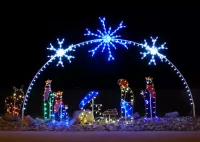
Christmas is an annual festival celebrated on December th commemorating...
Hong Kong is a Special Administrative Region of the People's...
Africa is the second-largest and second-most populous continent comprising of...
Trending
2 months ago Wole Soyinka's US Visa Revoked: Nobel Laureate Speaks Out Against Travel Ban.
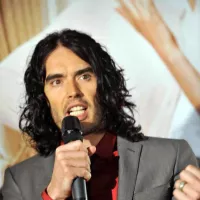
7 months ago Russell Brand Denies Rape and Sexual Assault Allegations, Pleads Not Guilty in Court

Chase Young is a professional football defensive end currently playing for the New Orleans Saints in the NFL He gained...
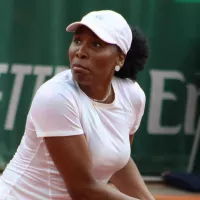
5 months ago Venus Williams, 45, returns to professional tennis with DC Open wild card.

1 month ago Ja'Marr Chase Suspended One Game: Spitting Incident Sparks Controversy, Appeal Pending

9 months ago Red Sox-Cardinals Game Postponed; Doubleheader Scheduled Due to Rain on Sunday.
Popular
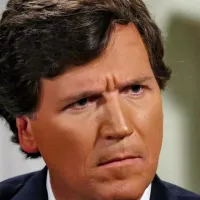
Tucker Carlson is an American conservative political commentator known for...

Candace Owens is an American conservative political commentator and author...

XXXTentacion born Jahseh Dwayne Ricardo Onfroy was a controversial yet...

Ben Shapiro is a prominent American conservative political commentator media...

William Franklin Graham III commonly known as Franklin Graham is...
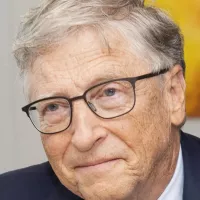
Bill Gates an American businessman and philanthropist revolutionized personal computing...
